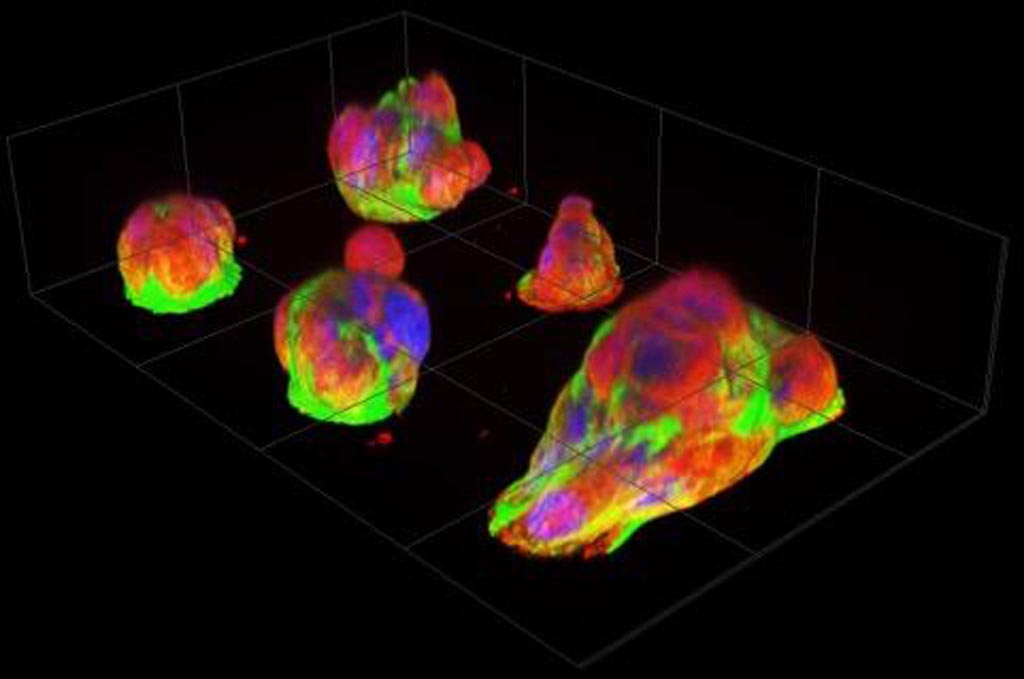In Vitro Technique Details Cancer Cell Attachment and Spread
By LabMedica International staff writers
Posted on 02 Oct 2018
A team of Japanese cell biologists described the development of a simple live-tumor in vitro imaging technique that enabled the study of the processes involved in the growth and spread of pancreatic cancer.Posted on 02 Oct 2018
Investigators at Hokkaido University (Japan) reported in the September 19, 2018, online edition of the journal Scientific Reports that they had invented a new cell culture substrate comprising a coated nanoscale glass slide with etched islands of 30 micrometers in diameter, which allowed dynamic visualization of pancreatic ductal adenocarcinoma (PDAC) microtumors.

Image: Fluorescence images of pancreatic cancer microtumors following overnight culture. Papillary structures pile up on micro-attachment sites (diameter 30 micrometers), with numerous cells visible per patch. The rightmost microtumor has extended over two attachment sites. Nuclei, actin filaments, and microtubules are labeled with blue, green, and red fluorescent markers, respectively (Photo courtesy of Miyatake Y. et al., Scientific Reports, September 19, 2018).
The investigators reported that when PDAC cells were cultured on the etched slides overnight, the cells self-organized into non-spheroidal microtumors that were anchored to the surface through cell-in-cell invasion (entosis). Using a time-lapse imaging system, they found that PDAC microtumors actively stretched to catch dead cell debris via filipodia (hair-like projections similar to those used for locomotion by some amoebas) and lamellipodia (cytoskeletal actin projections on the mobile edge of the cell).
The etched microplate method enabled visualization of live tumor dynamics; the microtumors endocytosed debris-derived surface nucleosides directly into vacuoles and then accumulated dead cell-derived phosphatidylserine (PS) on their surfaces (resulting in PS externalization, a cause of cancer immune evasion).
"Cancer studies so far either use cell cultures in which cancer cells do not necessarily behave naturally, or tissue samples that do not allow live observation. So there is a big gap in our knowledge of how cancer cells actually behave," said first author Dr. Yukiko Miyatake, assistant professor of pathology at Hokkaido University. "I hope this easy and low-cost technique will find widespread adoption. If the discoveries made during these first observations are physiologically or pathologically relevant phenomena, many more new hints may be gleaned for the development of more effective cancer treatment approaches."
Related Links:
Hokkaido University













